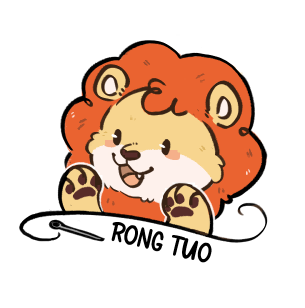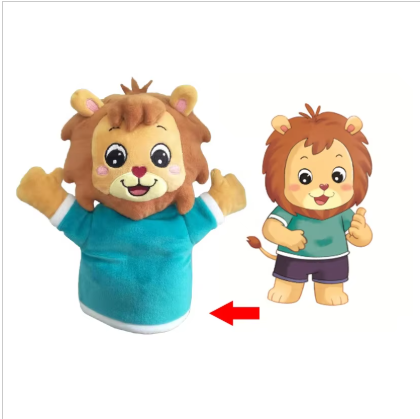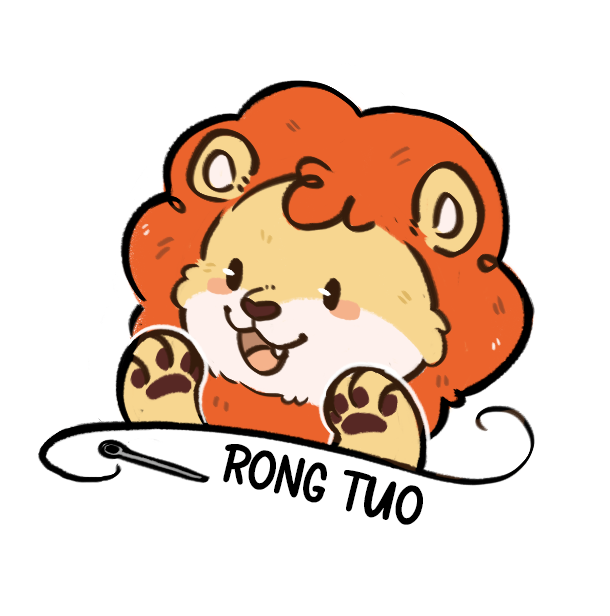Evaluating Material Quality in Plush Animal Toys
Understanding Fabric Types and Textures
Picking out the right fabric makes all the difference when creating quality plush animals. Most manufacturers go with polyester, cotton, or velour, each bringing something different to the table. Polyester stands out because it holds up well against daily wear and tear, resists wrinkles, and doesn't shrink after multiple washes – perfect for kids' toys that get handled constantly. Cotton has that nice soft touch many people love, giving toys a natural feel that works for both little hands and adult collectors, although it does need extra care to avoid pilling over time. Velour manages to merge the cozy comfort of velvet with the low maintenance of synthetics, creating that rich texture that really brings stuffed animals to life. The way a toy feels matters a lot to users; those extra soft materials just seem to grab attention better and make folks willing to pay more for them. Look at companies such as Jellycat or Maileg who've started incorporating recycled materials into their products lately. These brands aren't just talking about sustainability anymore – they're actually walking the walk to win over customers who care deeply about environmental impact.
Identifying Premium Stuffing Materials
What goes inside those stuffed animals makes all the difference when it comes to how comfortable they feel and how long they last. Most manufacturers go with polyester fiberfill because it's cheap and shapes easily, but there are better alternatives out there. Organic cotton and natural latex stuffings actually hold up much better over time. They keep the toy from losing its weight and shape, which means kids get a better cuddling experience without the toy collapsing after a few weeks on the bed. Toys filled with quality materials tend to be lighter in hand too, stay looking good longer, and just feel nicer when hugged. Look for labels showing GOTS certification if wanting something really top notch. This standard means the materials meet strict environmental and safety requirements. Parents shopping carefully will notice these differences, especially when comparing toys side by side at the store.
Recognizing Safety Certifications (OEKO-TEX, GOTS)
When looking at plush animal toys, certifications like OEKO-TEX and GOTS really matter for quality and safety. The OEKO-TEX label basically means the product doesn't contain harmful stuff, which builds trust because parents know their kids can play safely without skin irritation or environmental issues. GOTS goes further than just checking if something is organic cotton. It actually looks at how the whole manufacturing process affects both people and planet. Some pretty shocking stats show many plush toys don't even pass basic safety tests, so these marks become super important for protecting little ones. Find those certifications by checking packaging labels or looking at tags on the actual toy. Get to know what each logo stands for and what kind of standards they require. Knowing this stuff helps shoppers pick out toys that care about both safety and being good for the environment.
Examining Construction and Craftsmanship
Inspecting Stitching and Seam Durability
Good stitching really matters when it comes to how long plush toys last before they fall apart. Manufacturers typically use different methods like lockstitch or chain stitch to make sure the seams hold up against all that squeezing and rough play kids give them. When we see loose threads sticking out or seams coming undone, that's usually a sign the toy wasn't made very well, and these flaws tend to get worse over time. Some industry numbers show that plush toys with strong stitching can stick around for years longer than ones where the workmanship just wasn't there. Parents know this from experience too many have seen cheap stuffed animals fall apart after only a few months of normal play.
Verifying Secure Attachments (Eyes, Noses)
How securely eyes and noses are attached makes all the difference for both safety and how long a plush toy will last. Most manufacturers use buttons, embroidery, or built-in stitching to keep these parts from coming loose, which cuts down on potential choking dangers. If something isn't fastened properly, it becomes a real problem for little kids who tend to put everything in their mouths. Anyone buying plush toys would be wise to give them a good check before handing them over. Look closely at those facial features and see if they stay put when tugged gently. A quick test like this goes a long way toward keeping playtime safe for everyone involved.
Checking Symmetry and Design Precision
When it comes to plush toys, getting the symmetry right really matters for how attractive they look. If the arms line up properly and the face isn't lopsided, people just find the toy more appealing overall. Most folks will notice when something looks off balance or poorly made. Looking at real world examples shows that consumers tend to gravitate toward toys where everything matches up nicely. Industry insiders often talk about how small details make a big difference in customer happiness. Toys that have good symmetry simply create better impressions in the minds of buyers, which is why manufacturers spend so much time getting those design elements just right.
Prioritizing Safety Standards
Compliance with International Regulations (EN71, ASTM F963)
Getting plush toys to meet international safety standards such as EN71 and ASTM F963 matters a lot when it comes to keeping kids safe. The rules actually involve pretty strict tests covering things like how the toys work mechanically, what chemicals might be present, and whether they catch fire easily. Take EN71 in Europe for instance it requires checking if there are any tiny bits that could come loose and also looks at harmful substances that might be dangerous. We've seen plenty of cases where toys didn't pass these tests got pulled off shelves after causing real harm to children. Parents wanting to know if their toys are up to standard should check those certification marks right on the box itself. If something isn't clear, don't hesitate to call the company directly and ask questions about their safety records.
Avoiding Choking Hazards in Small Parts
Small parts in plush toys like beads and buttons present real choking dangers that parents need to watch out for. These little components often come loose during normal playtime, creating serious risks for kids under three years old. When shopping for stuffed animals or soft toys, it makes sense to check how securely everything is attached and whether any pieces could fit into a child's mouth. The US Consumer Product Safety Commission reports hundreds of emergency room visits each year related to toy parts causing breathing problems. A quick glance at their website shows just how many families have dealt with this issue, making careful toy selection absolutely essential for household safety.
Ensuring Non-Toxic Material Composition
What goes into making plush toys matters a lot when it comes to keeping kids safe, especially the actual stuff they're made from. Kids put everything in their mouths, so using non-toxic materials really makes sense since they spend so much time chewing on stuffed animals and hugging them close. Organic cotton and certain types of certified polyester stand out as good options because they don't contain those nasty chemicals we all try to avoid. Health watchdog groups have been warning about dangerous substances in some toys for years now. That's why smart shoppers check for third party certifications before buying anything for little ones. A quick glance at labels can save headaches down the road.
Assessing Long-Term Durability
Testing Machine-Washable Features
Plush toys that can go in the washing machine make life so much easier when it comes time to clean them up, plus they tend to last way longer than non-washable options. When toys get washed regularly, they stay looking fresh instead of getting all grimy and starting to fall apart from dirt buildup. Big name manufacturers like Jellycat and Gund know this well, which is why they include detailed washing guidelines right on the packaging or website. Parents love hearing stories online where kids' favorite stuffed animals come out of the washer looking almost brand new after several cycles. The fact that these toys hold up through repeated washing speaks volumes about how well they're made and designed for real world use.
Evaluating Wear Resistance Over Time
The longevity of plush toys really depends on what they're made from. Good quality fabrics and proper stuffing make all the difference when it comes to resisting wear and tear. Things like how well the material stands up to rubbing and how tightly packed the fibers are determine whether a toy keeps its shape after being played with day after day. Studies show that better materials generally last around three to five years with regular use before showing signs of significant damage. Parents wanting their kids' favorites to stick around longer should read those care labels carefully and look for brands known for using solid materials in their construction process rather than going for the cheapest option available.
Monitoring Stuffing Integrity After Use
Keeping the stuffing in good condition matters a lot for how plush toys look and stay safe over time. When the stuffing starts breaking down, we often see things like lumps forming or areas where the filling has packed together tightly. These changes make the toy less appealing to hold and sit with comfortably. To keep those soft companions looking and feeling nice, give them a good shake out now and then. Store them somewhere dry away from damp spots that might encourage mold growth. Most folks find it wise to replace any plush toy whose shape has gotten really distorted since worn out materials can pose risks, particularly around kids who tend to put everything in their mouths. With regular checks and some basic care routines, these beloved items will continue bringing joy for much longer than they otherwise would.
Frequently Asked Questions
What are the best fabrics for plush animal toys?
Polyester, cotton, and velour are popular choices due to their durability, softness, and luxurious texture.
Why are safety certifications important for plush toys?
Certifications like OEKO-TEX and GOTS ensure toys are free from harmful substances and meet stringent safety and environmental standards.
How can I ensure the long-term durability of a plush toy?
Choose toys with machine-washable features, high-quality stuffing, and follow care instructions meticulously for extended lifespan.
What should I check for when purchasing a plush toy?
Inspect fabric quality, stuffing, safety certifications, and secure attachments to ensure safety and durability.


